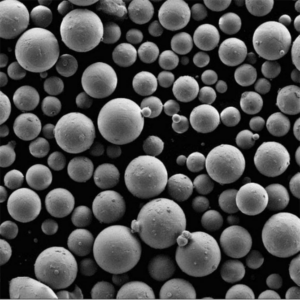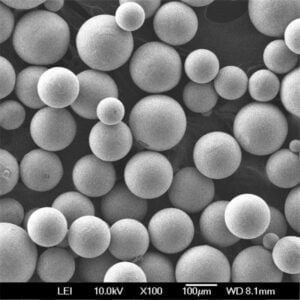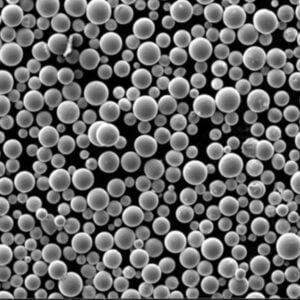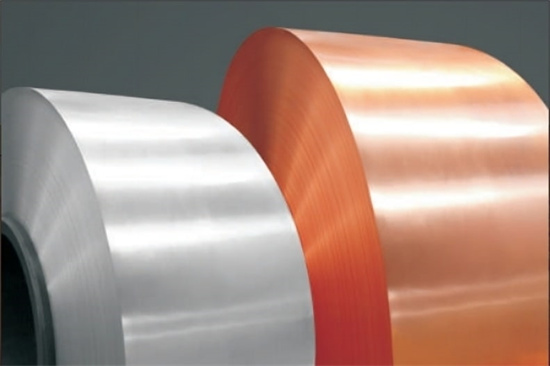

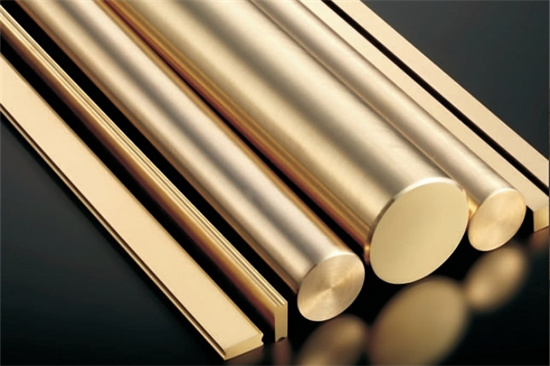
CuFe2P: The Alloy that Combines Strength with Versatility
Low MOQ
Provide low minimum order quantity to meet different needs.
OEM & ODM
Provide customized products and design services to meet unique customer needs.
Adequate Stock
Ensure fast order processing and provide reliable and efficient service.
Customer Satisfaction
Provide high quality products with customer satisfaction at the core.
share this article
Table of Contents
When it comes to specialized alloys for industrial applications, CuFe2P, or Copper-Iron-Phosphorus alloy, stands out for its strength, durability, and conductivity. Whether you’re working in automotive, telecommunications, or electronics, understanding the properties of CuFe2P can help you make smarter material choices for your project. In this guide, we’ll dive deep into the world of CuFe2P, exploring everything from its composition to its uses, and why it’s often the go-to material in many high-performance applications.
Our goal is to provide you with a comprehensive, SEO-optimized guide on CuFe2P so that you walk away informed and confident in your material selection. Let’s get started!
Overview
CuFe2P is a Copper-Iron-Phosphorus alloy that blends the conductivity of copper with the strength provided by iron and phosphorus. This combination makes it an ideal material for applications where electrical conductivity is paramount, but some level of mechanical strength is also required. Beyond its basic properties, CuFe2P offers excellent corrosion resistance and formability, making it a versatile choice across a range of industries.
Key Features :
- High mechanical strength without sacrificing conductivity.
- Excellent corrosion resistance, suitable for harsh environments.
- Good formability, making it easy to process into various shapes.
- Cost-effective compared to other high-performance alloys.
Composition and Properties
The unique properties of CuFe2P stem from its carefully balanced composition. The addition of iron and phosphorus to copper enhances its strength and durability, making it suitable for high-stress environments.
Composition
| Element | Percentage (%) |
|---|---|
| Copper (Cu) | 97.0 – 98.7 |
| Iron (Fe) | 1.8 – 2.5 |
| Phosphorus (P) | 0.05 – 0.20 |
| Other Elements | Trace amounts |
- Copper (Cu): The base element, providing high electrical conductivity and thermal properties.
- Iron (Fe): Enhances mechanical strength and hardness without overly compromising conductivity.
- Phosphorus (P): Improves corrosion resistance and adds workability to the alloy.
Physical and Mechanical Properties
| Property | Value |
|---|---|
| Tensile Strength | 350 – 450 MPa |
| Yield Strength | 160 – 280 MPa |
| Elongation | 10 – 20% |
| Hardness | 100 – 150 HV |
| Electrical Conductivity | 30 – 50% IACS (International Annealed Copper Standard) |
| Density | 8.8 g/cm³ |
| Thermal Conductivity | 270 – 300 W/mK |
| Corrosion Resistance | Excellent in most environments |
How the Composition Affects Properties:
- High Strength: The iron content significantly boosts the strength of the alloy, making it suitable for applications where durability is key.
- Good Conductivity: While not as conductive as pure copper, CuFe2P maintains decent electrical conductivity, making it effective for electrical components.
- Corrosion Resistance: The addition of phosphorus helps the alloy withstand corrosive environments, especially in humid or outdoor applications.
Applications
Because of its unique blend of properties, CuFe2P is used in a wide range of industries. Whether it’s in automotive components, electronics, or telecommunications, CuFe2P offers the right mix of strength, durability, and conductivity.
Common Applications
| Industry | Applications |
|---|---|
| Electronics | Connectors, terminal pins, springs |
| Automotive | Battery connectors, wiring harnesses, heat exchangers |
| Telecommunications | Signal connectors, coaxial cables |
| HVAC (Heating, Ventilation, and Air Conditioning) | Heat exchangers, piping systems |
| Renewable Energy | Solar panel connectors, wind turbine components |
Why it is Ideal for These Applications:
- Electronics: In the electronics industry, CuFe2P is frequently used for connectors and springs because of its combination of conductivity and mechanical strength. These components often need to endure repetitive mechanical stresses while maintaining a reliable electrical connection.
- Automotive: Automotive applications benefit from CuFe2P’s high strength and corrosion resistance, especially in battery connectors and wiring harnesses, which are exposed to moisture and vibration.
- Telecommunications: CuFe2P is ideal for coaxial cables and signal connectors due to its good conductivity and durability, ensuring consistent performance over time.
Specifications, Sizes, and Standards
When choosing CuFe2P for a specific application, it’s essential to understand the available sizes, specifications, and standards to ensure compatibility with your project.
Specifications and Sizes
| Specification | Details |
|---|---|
| Form | Wire, strip, rod, sheet, and powder |
| Available Thickness | 0.05 mm to 6 mm |
| Width Range | 0.5 mm to 150 mm |
| Length | Customizable based on client needs |
| Temper | Annealed, half-hard, full-hard |
| Standards | ASTM B152, EN 1652, JIS H3100 |
Grades
| Grade | Characteristics |
|---|---|
| CuFe2P Standard | General-purpose, balanced properties |
| CuFe2P High Strength | Enhanced mechanical strength for demanding applications |
| CuFe2P High Conductivity | Optimized for higher electrical conductivity |
Suppliers and Pricing
The price of CuFe2P can vary depending on the grade, form, and quantity required. Below is a breakdown of common suppliers and typical pricing.
Suppliers and Pricing Details
| Supplier | Location | Price Range (per kg) | Delivery Time |
|---|---|---|---|
| Global Metals Co. | USA | $20 – $35 | 1-2 weeks |
| Euro Copper Alloys | Europe | $18 – $30 | 2-3 weeks |
| AsiaMet Copper | China | $15 – $28 | 3-4 weeks |
| CopperTech International | India | $17 – $32 | 2-4 weeks |
| Superior Alloys Ltd. | UK | $22 – $38 | 1-2 weeks |
Factors Affecting Pricing:
- Quantity: Larger orders tend to lower the price per kilogram.
- Grade: Specialized grades, such as high-conductivity or high-strength variants, generally cost more than the standard CuFe2P.
- Location: Shipping costs and local taxes can affect the final price, particularly for international orders.
Advantages and Limitations
Like any material, CuFe2P comes with its pros and cons. Below, we’ll explore the advantages and limitations of using this alloy, allowing you to decide whether it’s the right material for your needs.
Advantages and Limitations
| Advantages | Limitations |
|---|---|
| High strength and good conductivity | Lower conductivity than pure copper |
| Excellent corrosion resistance | More expensive than standard copper alloys |
| Suitable for harsh environments | Limited resistance at very high temperatures |
| Available in various customizable forms | Requires careful processing to maintain properties |
Is CuFe2P the Right Material for You?
If you need a material that offers a unique blend of strength and conductivity, it is an excellent choice. However, if cost or high-temperature applications are your primary concerns, you might want to consider other copper alloys.
Comparing CuFe2P to Other Copper Alloys
To help you make an informed decision, let’s compare CuFe2P with other popular copper alloys like C11000 (pure copper) and CuBe2 (beryllium copper).
CuFe2P vs. C11000 and CuBe2
| Property | CuFe2P | C11000 (Pure Copper) | CuBe2 (Beryllium Copper) |
|---|---|---|---|
| Tensile Strength | 350 – 450 MPa | 200 – 300 MPa | 600 – 800 MPa |
| Yield Strength | 160 – 280 MPa | 70 – 100 MPa | 480 – 620 MPa |
| Electrical Conductivity | 30 – 50% IACS | 100% IACS | 15 – 30% IACS |
| Corrosion Resistance | Excellent | Moderate | Good |
| Cost | Moderate | Low | High |
| Applications | Connectors, terminals, springs | Electrical wiring, general use | Springs, high-load components |
Key Takeaways:
- It offers better strength than C11000 (pure copper) while retaining decent conductivity.
- Compared to CuBe2 (beryllium copper), it has lower tensile strength, but higher conductivity, making it better suited for electrical applications.
- Cost-wise, it is more expensive than pure copper but less costly than beryllium copper.
Frequently Asked Questions (FAQ)
To help clear up any lingering questions, we’ve compiled a list of frequently asked questions about it.
| Question | Answer |
|---|---|
| What is CuFe2P used for? | It is widely used in applications that require both strength and electrical conductivity, such as connectors and heat exchangers. |
| Is CuFe2P suitable for outdoor use? | Yes, it has excellent corrosion resistance, making it ideal for outdoor and humid environments. |
| How much does CuFe2P cost? | Prices typically range from $15 to $38 per kg, depending on the supplier and grade. |
| Can CuFe2P be used in high-temperature environments? | While it can handle moderate temperatures, it’s not ideal for extreme heat applications. |
| How does CuFe2P compare to pure copper? | It offers significantly better mechanical strength than pure copper while maintaining good electrical conductivity. |
| What forms is CuFe2P available in? | It is available as wire, strip, rod, sheet, and powder, making it suitable for various manufacturing processes. |
Conclusion
It is a high-performance alloy that combines the strength of iron and workability of phosphorus with copper’s conductivity. Whether you’re working in electronics, automotive, or telecommunications, it offers a versatile solution that bridges the gap between strength, corrosion resistance, and electrical performance.
Although it is not the cheapest copper alloy on the market, its superior mechanical properties and durability make it a cost-effective choice for demanding applications. Whether you’re designing connectors, heat exchangers, or wiring systems, it delivers the performance you need for the toughest jobs.
So, is CuFe2P the right material for your project? If you’re looking for a material that balances mechanical strength and electrical conductivity, it’s hard to beat.
Get Latest Price
About Met3DP
Product Category
HOT SALE
CONTACT US
Any questions? Send us message now! We’ll serve your request with a whole team after receiving your message.

Metal Powders for 3D Printing and Additive Manufacturing
COMPANY
PRODUCT
cONTACT INFO
- Qingdao City, Shandong, China
- [email protected]
- [email protected]
- +86 19116340731






